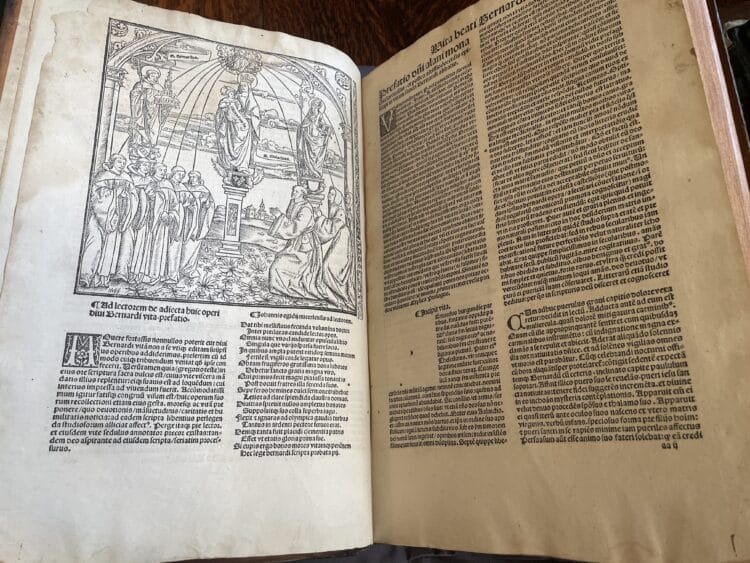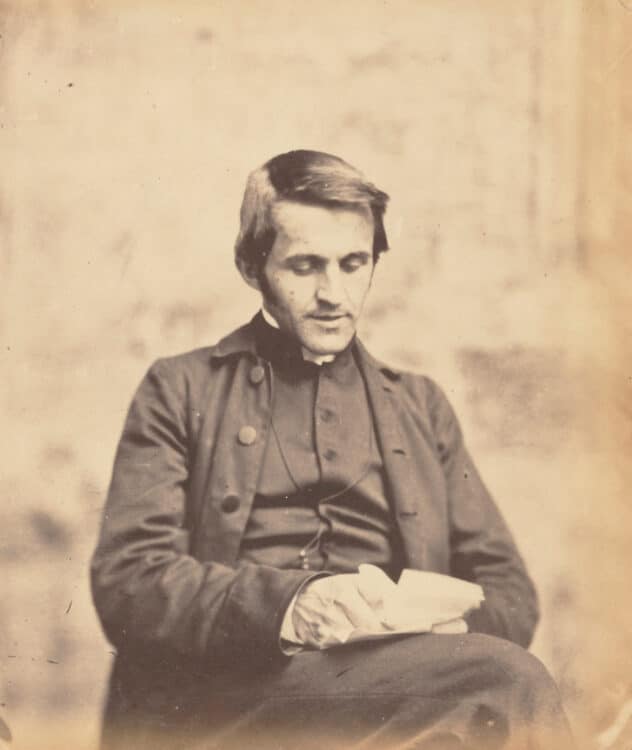The Morris Window
30 Apr 2019|Jonathan Yates
- Library, Arts & Archives
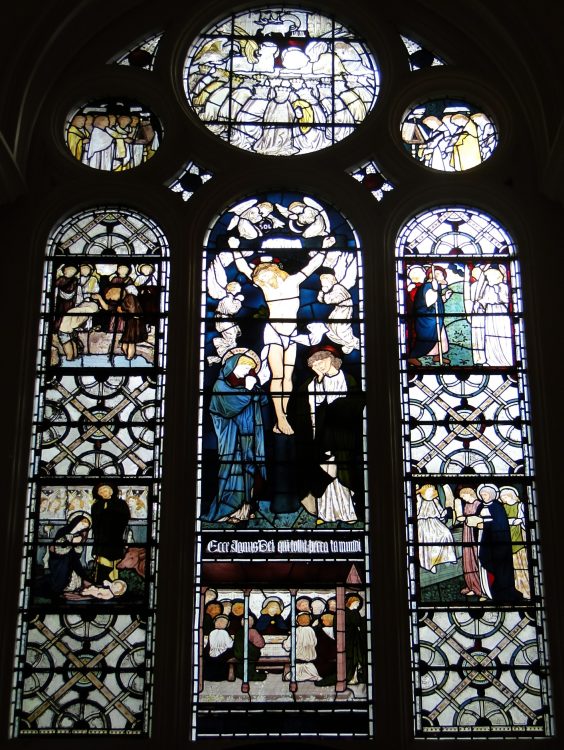
The College Chapel contains one of Oxford’s most beautiful hidden gems: the East Window, installed in 1865 by the firm of Morris, Marshall, Faulkner and Co.
William Morris had founded ‘The Firm’ four years earlier to produce furnishings for the home, handcrafted within the spirit of the Arts and Crafts movement. This was their first stained glass commission in Oxford. The window is full of exquisite details such as the flowers growing between the stones in the scene of the last supper, and the angels with candles watching over the Holy Family in the Nativity scene.
On bright days the window almost ‘sings’, and I recommend a pair of binoculars to fully appreciate all of the details.
Morris drew upon a recent revival in the art of stained glass making. The pinnacle of stained glass making was in the early Middle Ages. By the 18th century many of the old techniques had been lost and English artists typically treated glass as a transparent form of canvas (an example is the East Window of Queen’s College Chapel – visible from Queen’s Lane). This led to windows that were, literally, dull. Victorian glass makers rediscovered the old techniques of coloured glass, and artists such as Morris understood the principles of design needed to make luminous windows.
Morris employed a variety of artists to produce designs for his windows. Most of the panels for our window were designed by Edward Burne-Jones. Morris himself designed two of the panels, and Philip Webb designed the tracery and worked out the overall composition. An artist would produce a detailed sketch and then a cartoon would be produced. These would be kept in a pattern book and often used for multiple windows. The College is fortunate to have Burne-Jones’s sketch for the Baptism of Christ and Morris’s cartoon for the Ascension. Most of the other cartoons for our window are in Birmingham City Art Gallery.
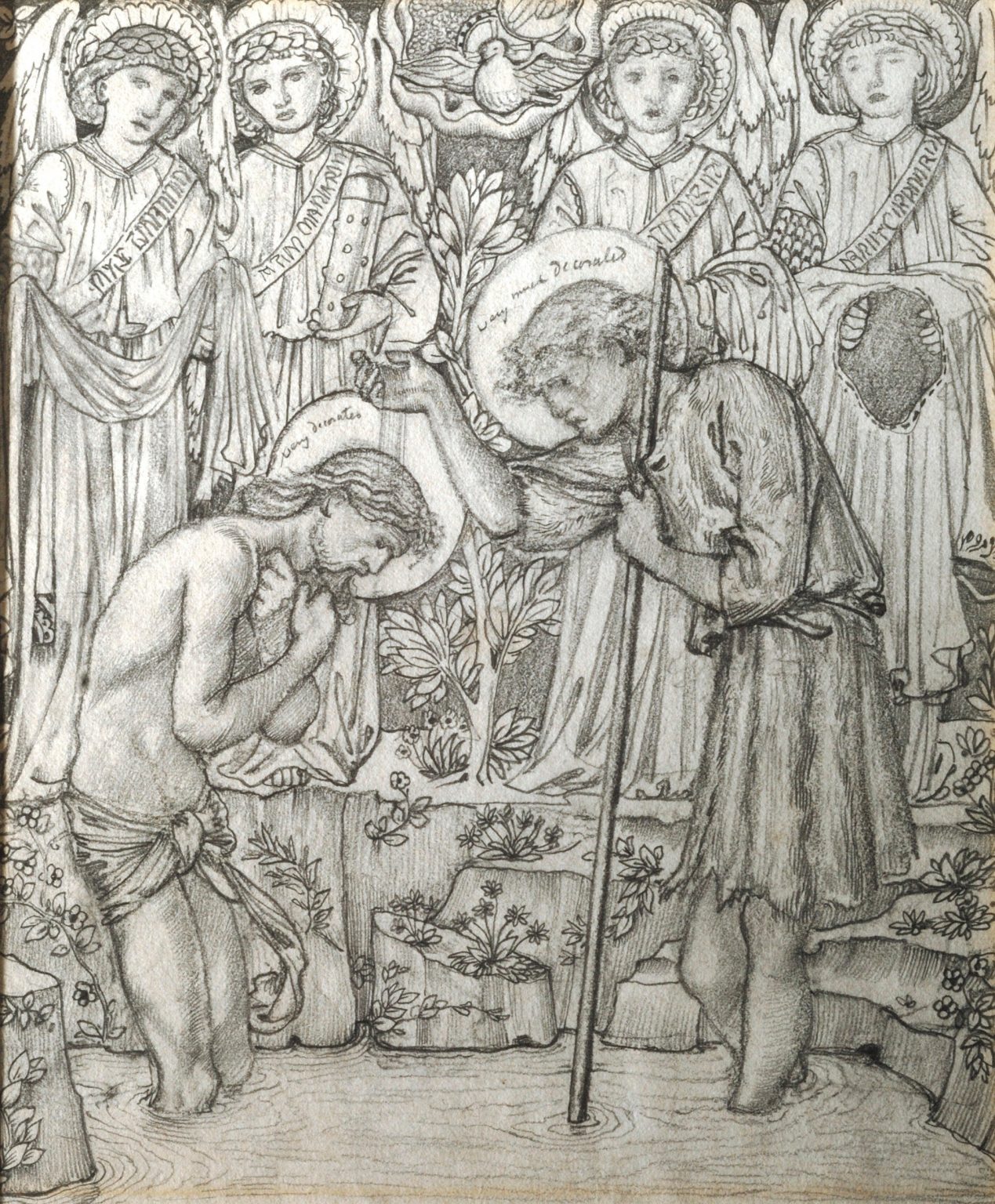
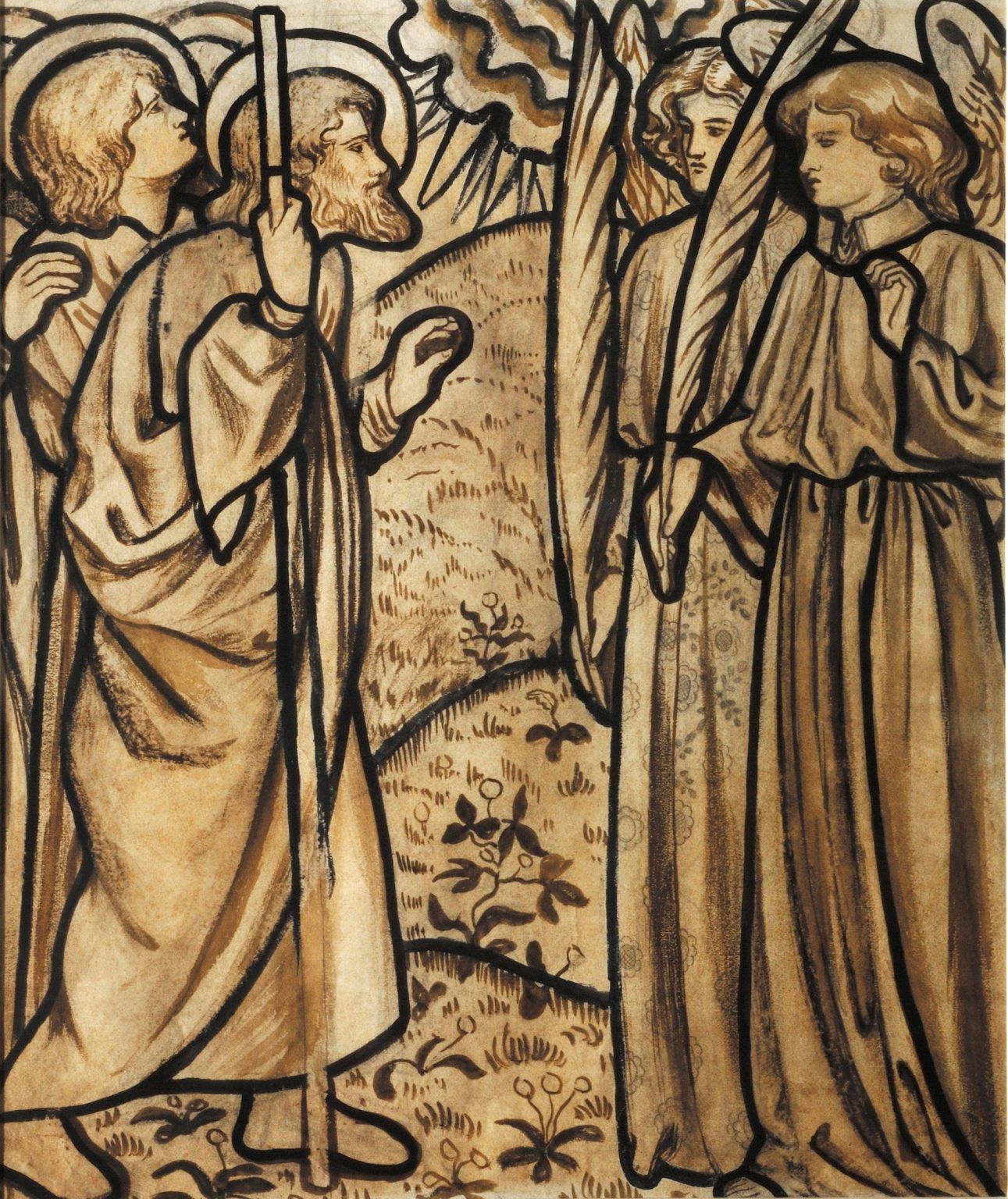
The window can be read as narrating the life of Christ. We start with Burne-Jones’s scene of the Nativity – with a host of angels watching and a starry sky behind. Next is Christ’s baptism, with the Holy Spirit appearing above in the form of a dove. We then jump to the scene of the Last Supper – we see Judas sneaking away, but note also the flowers growing at the front of the room. The central scene is the Crucifixion: Jesus is flanked by Mary and St John. Below are the words of John the Baptist “Ecce Agnus Dei, qui tollis peccata mundi – Behold the Lamb of God who takes away the sin of the world.” Above are two angels; the sun has been darkened and the moon is visible. The two panels on the left were designed by William Morris. In the lower, three women have gone to Jesus’s tomb; they find the tomb empty and an angel tells them that Christ has risen. The upper panel depicts Jesus’s ascension into Heaven; as the disciples stare at the sky, two angels in white appear.
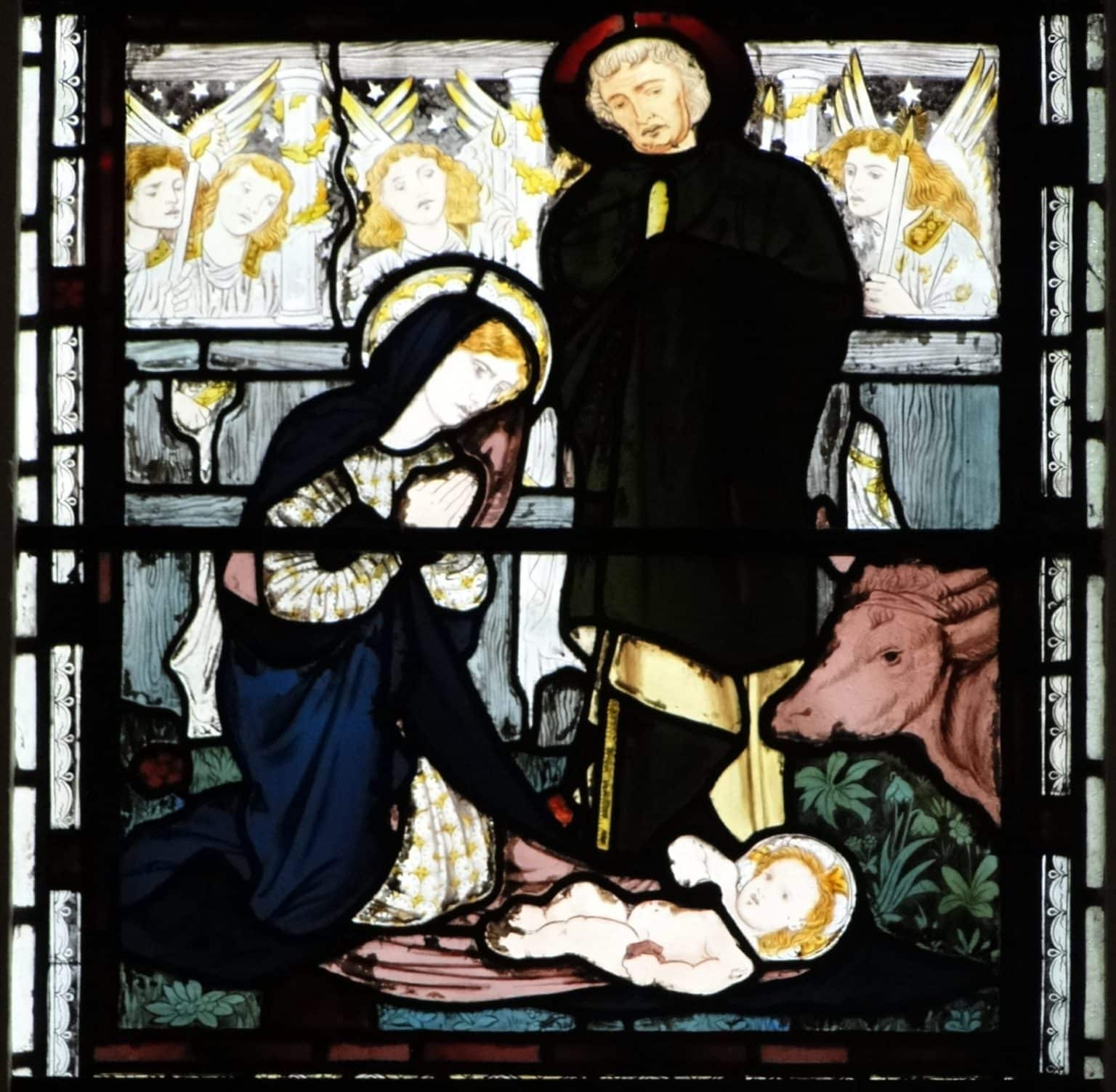
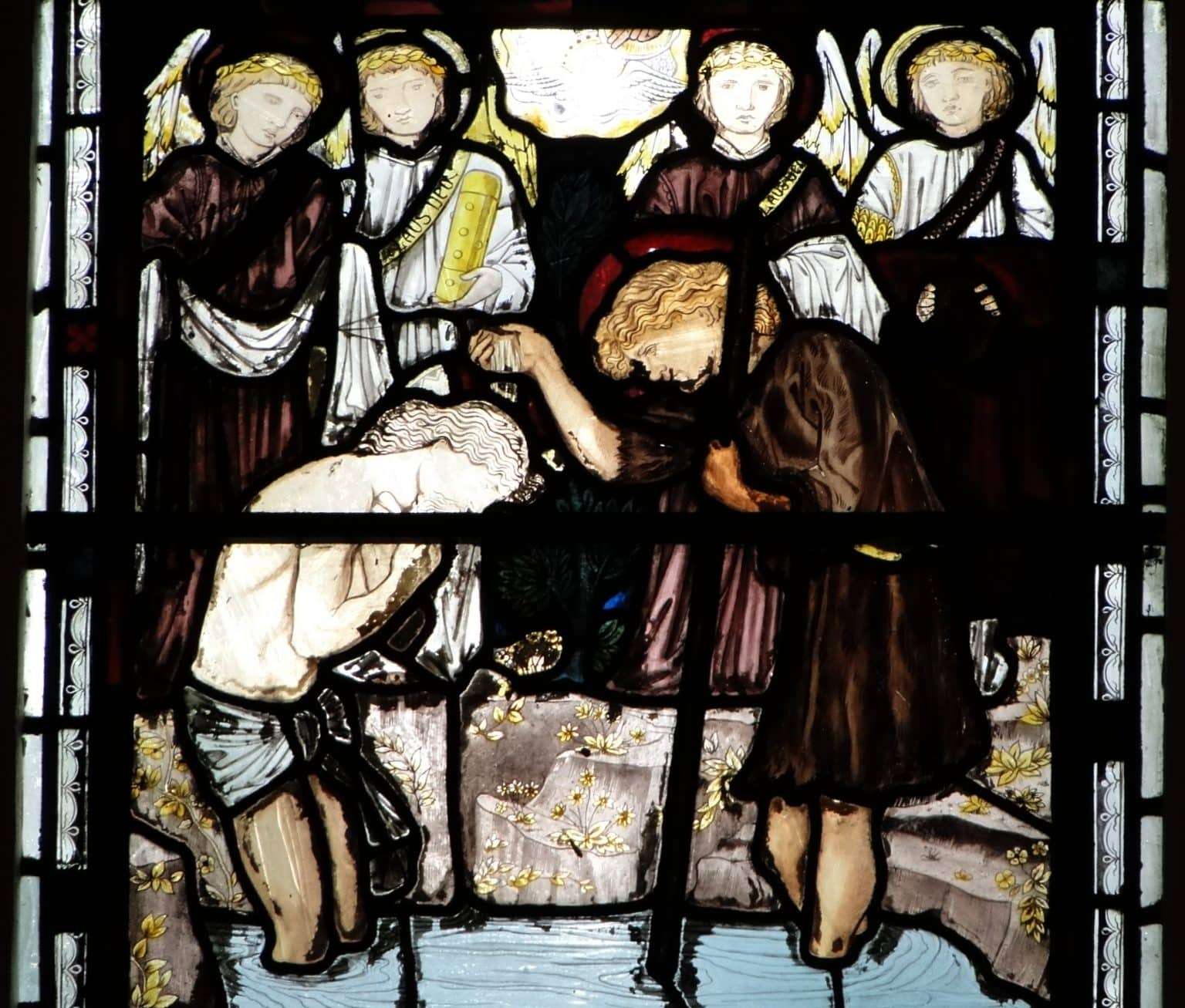
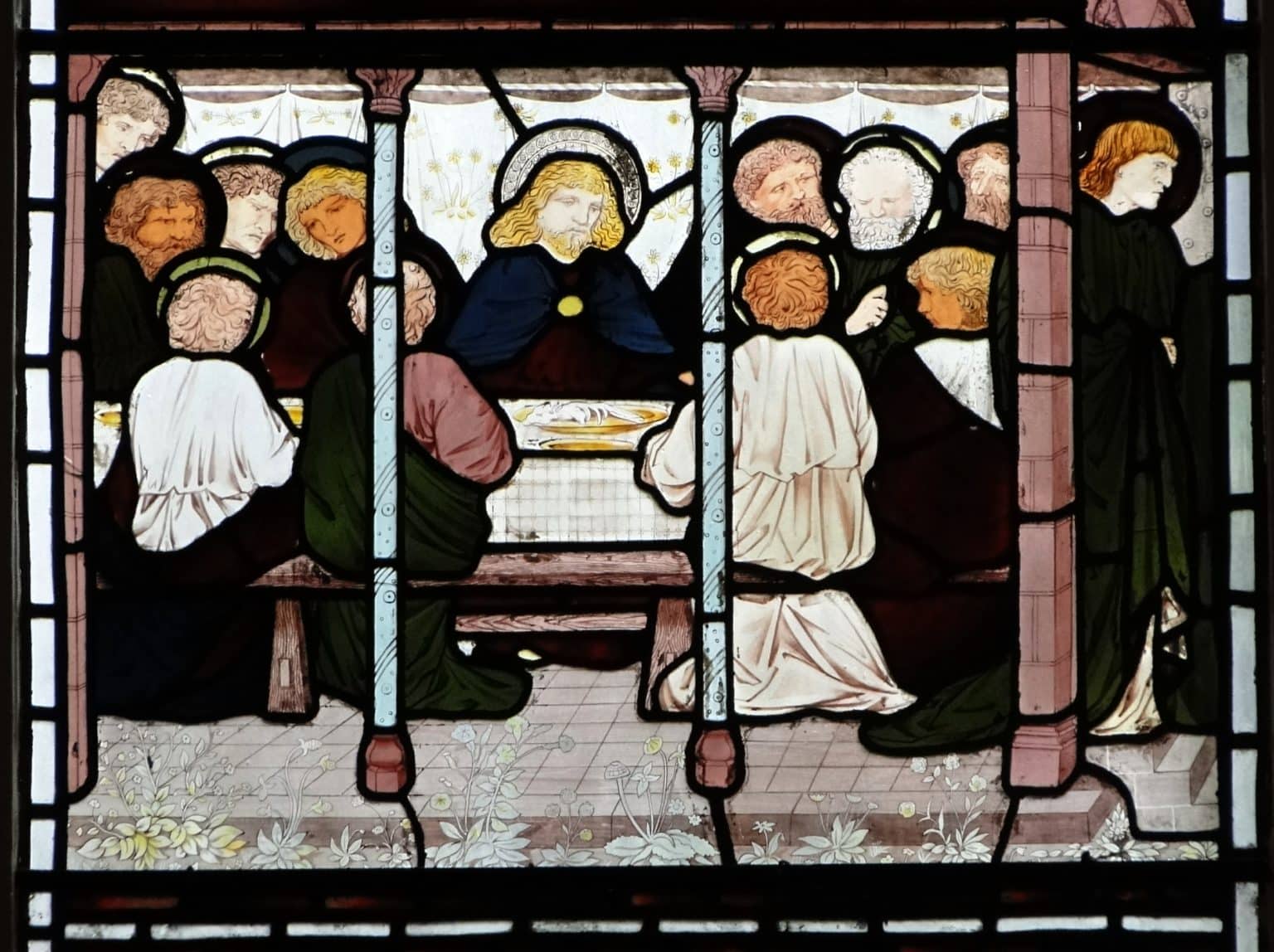
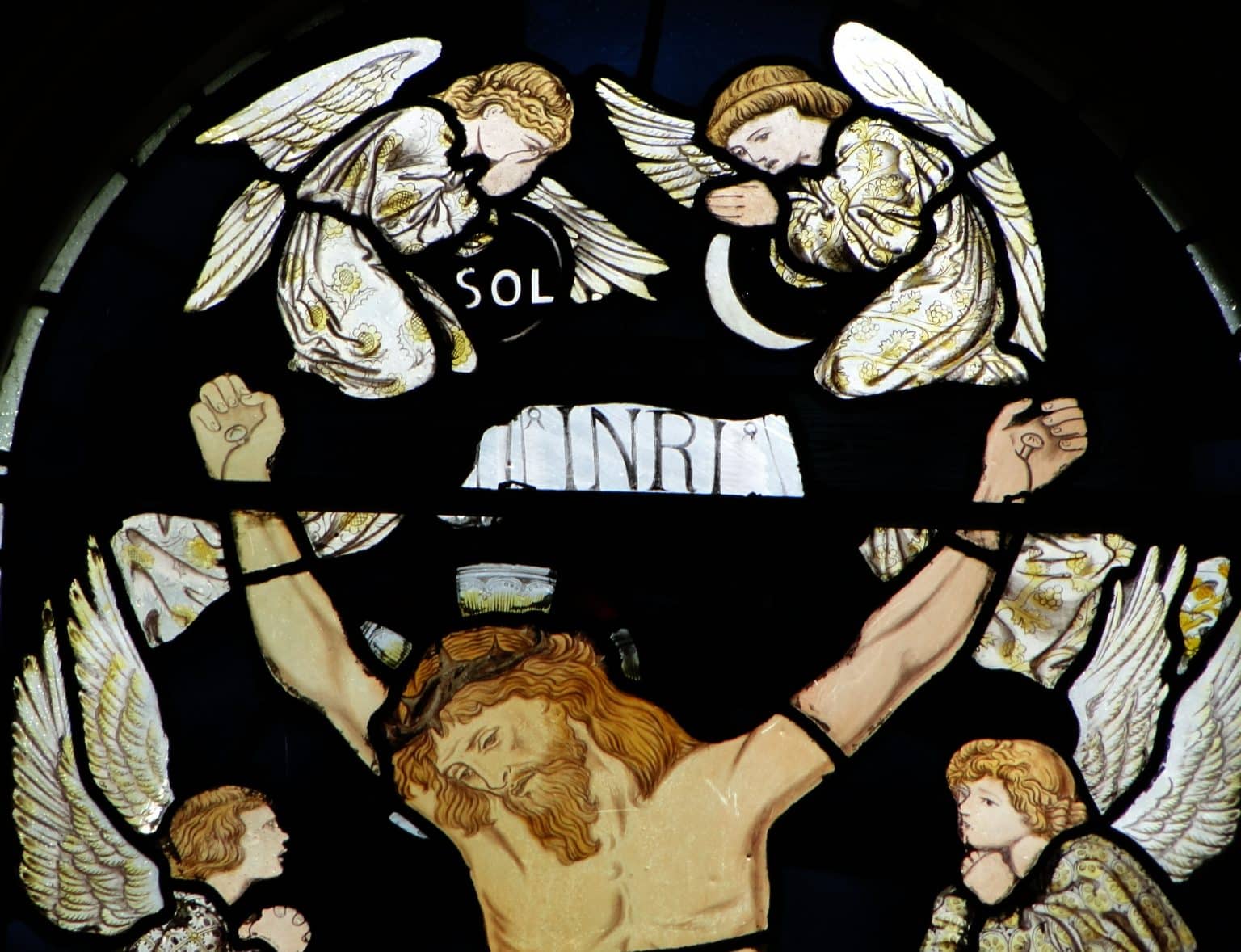
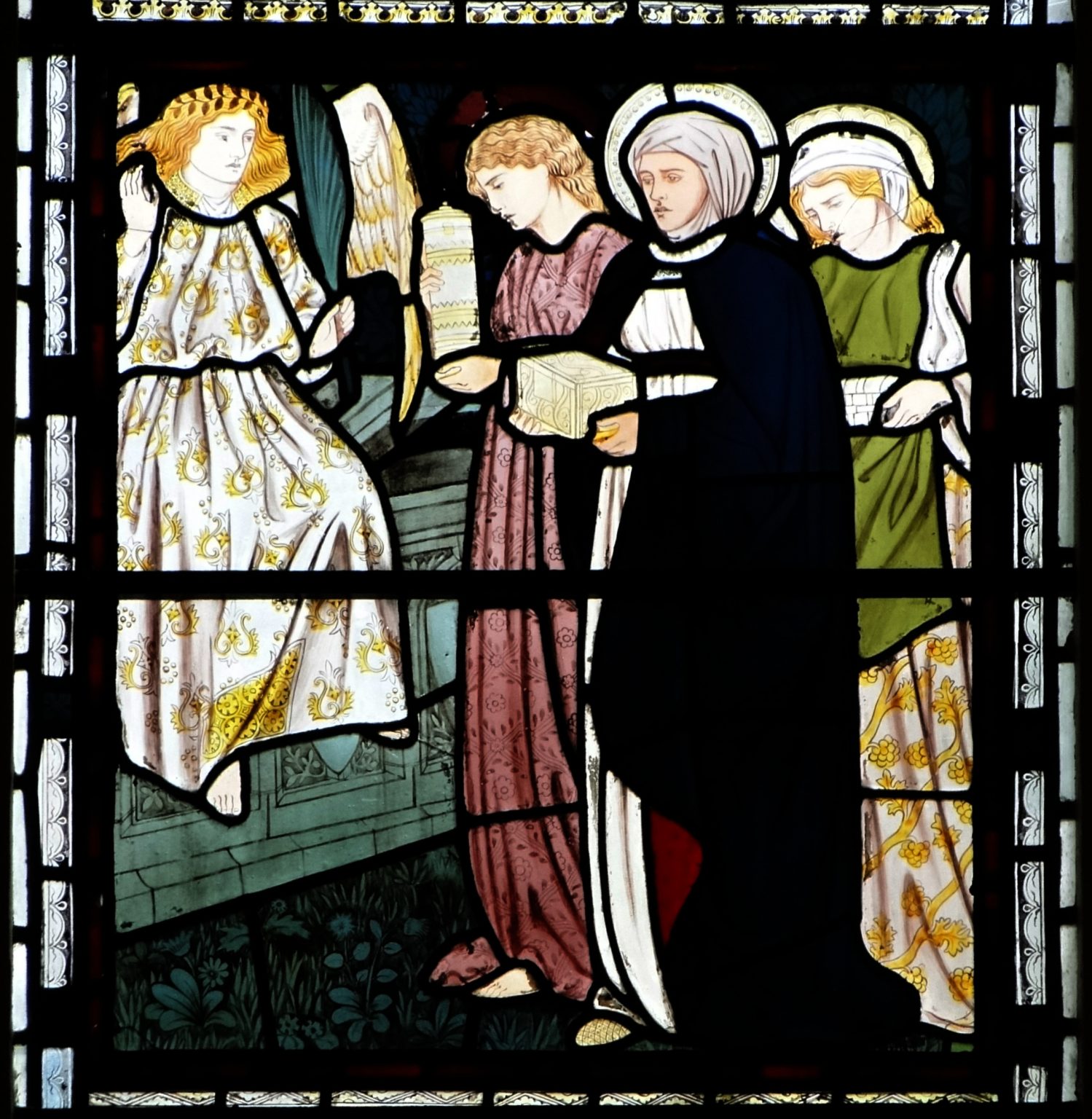
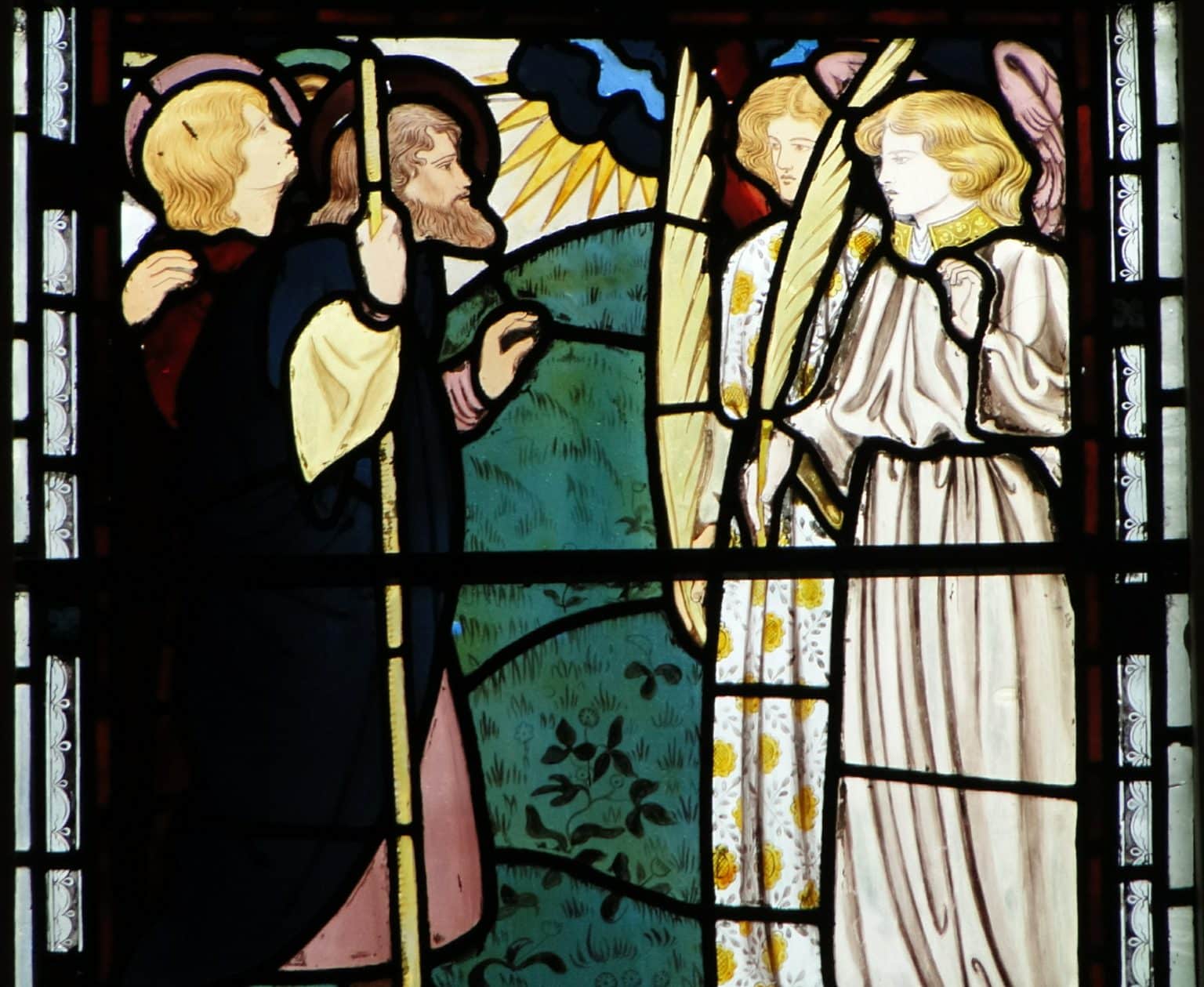
The three circular panels at the top of the window are taken from events described in Revelations. Twenty-four kings have assembled, together with four living creatures (a lion, an ox, an eagle and a human). They are worshipping Christ, who appears in the form of a Lamb with seven horns. Behind is a book with seven seals.
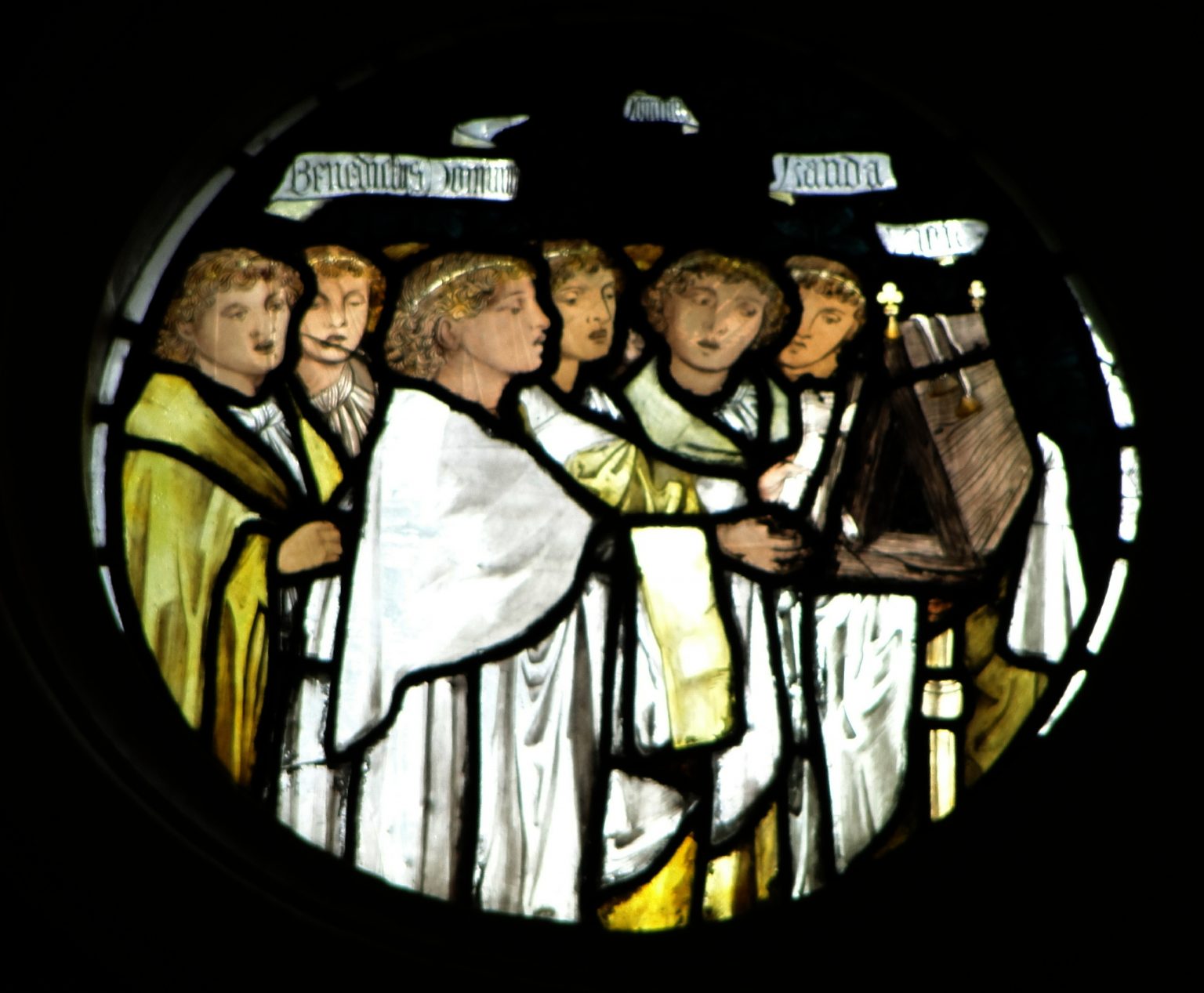
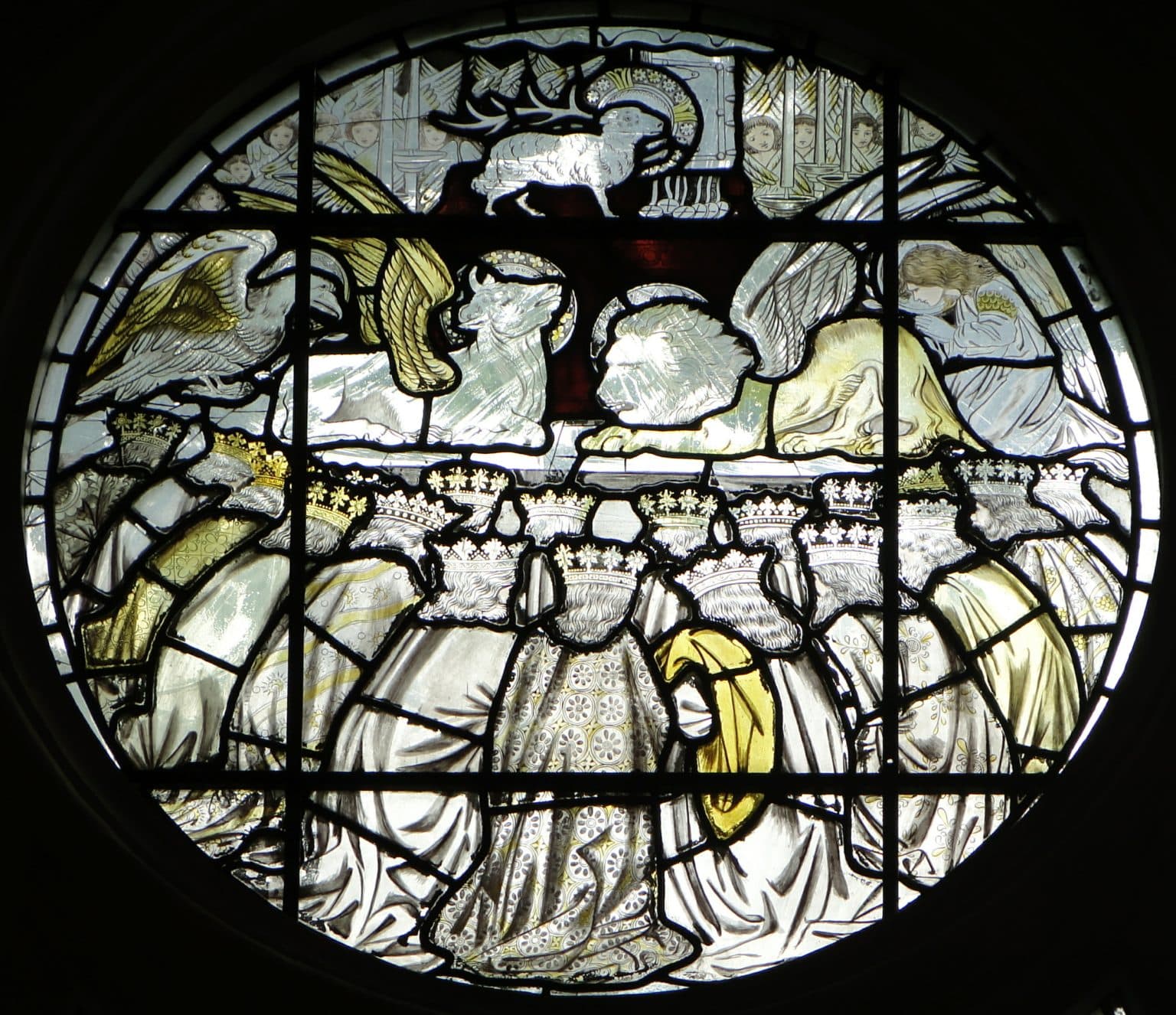
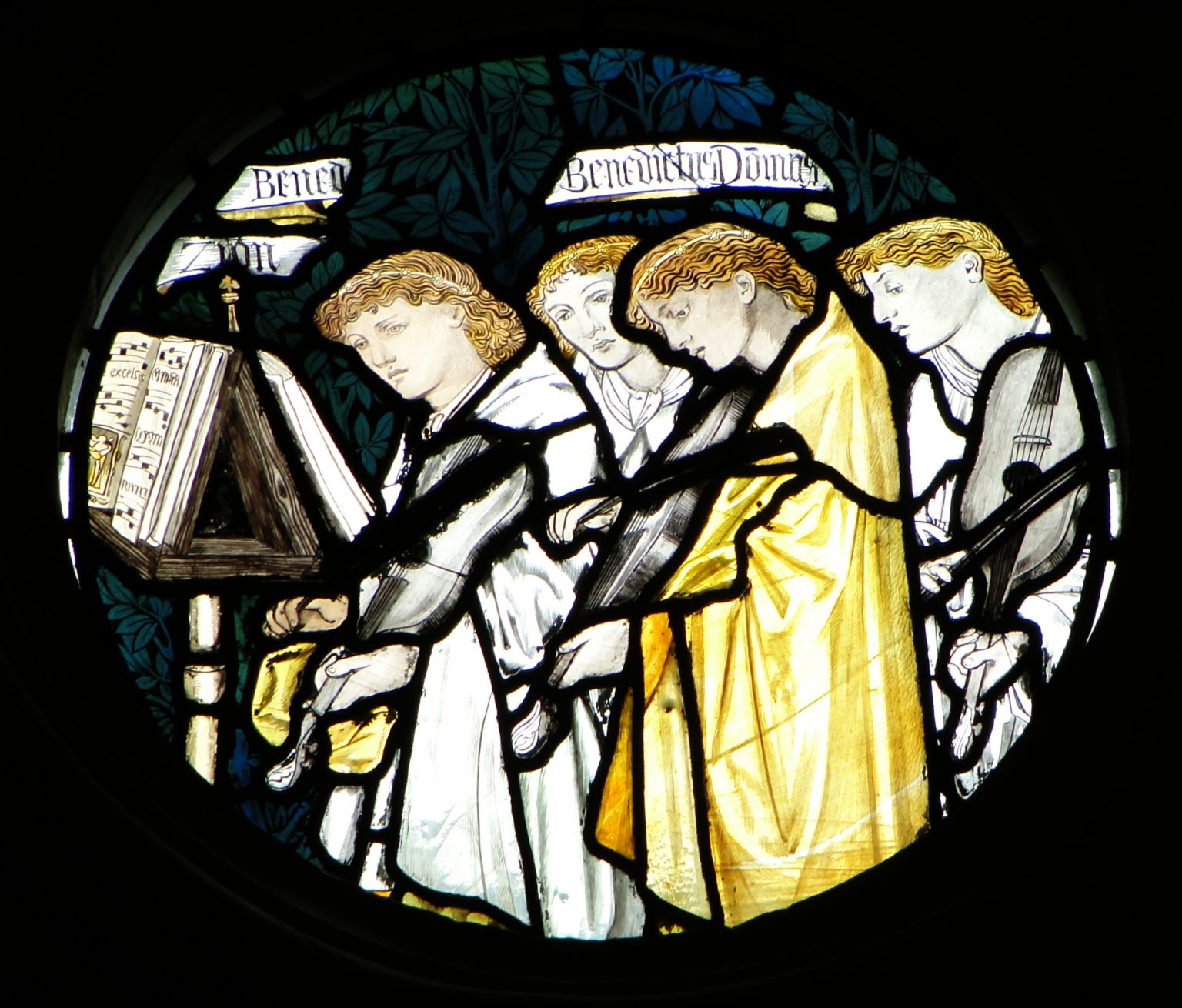
During my time at the Hall the window has given me great pleasure, but one question still puzzles me: who had the foresight to commission this window, so early in Morris’s career? I am yet to find a definite answer, but I have a hypothesis. They key probably lies with Edward Moore who became Principal in 1864, the year before the window was installed. Moore and Morris were exact contemporaries at Oxford. Moore matriculated at Pembroke in 1853, Morris at Exeter in 1852 – but he delayed coming into residence until the following year. Morris, together with his Exeter friend Burne-Jones joined the ‘Birmingham Set’: a group of Pembroke students who would meet regularly in Charles Faulkner’s room. The Birmingham Set would become influential in the Arts and Crafts movement. Faulker went on to join ‘The Firm’, but returned to a fellowship at University College in 1864. Moore must have encountered Morris and Faulkner during his undergraduate days – or at the least been familiar with their work. We can say with certainty that Moore approved of the window. Moore also held the Rectorship of Gatscombe on the Isle of the Wight, and later the same year Gatscombe church also commissioned a Morris window.
I am grateful to Will Donaldson for helping me fully understand the narrative in the window.
All photographs of the window above are reproduced by kind permission of Rex Harris.
Read more on our blog
Category: Library, Arts & Archives
Author

Jonathan
Yates
Professor Jonathan Yates is a tutor in Materials Science at St Edmund Hall. He also holds the role of Picture and Chattels Fellow which sees him take responsibility for the cataloguing, conservation and use of the Hall’s art collection, including paintings, photographs, silver and other items.
